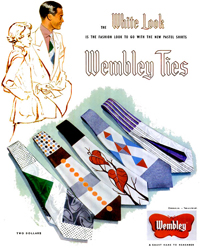We love old movies on their own merits, but we watch them in a way that’s very different from the way we watch modern films. For us (and we’re confident we’re not alone in this), old movies are like time travel. We listen closely to the dialogue for slang we might not have heard before, we examine all the actors from head to toe to take in their vintage clothing, we watch for period billboards and advertisements to discover long-forgotten products and businesses, and when we do uncover something new, we quickly turn to our good friend Ms. Google to see what knowledge she has to share.
Recently, we were watching Undertow, a film noir from 1949. It stars Scott Brady (he was Lawrence Tierney‘s brother, you know) and an actress we weren’t sure we recognized named Peggy Dow.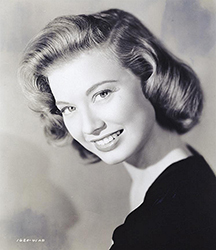
We looked up Dow on IMDb.com and learned that, after just a handful of pictures, she gave up Hollywood to marry a guy named Walter Helmerich, who was just getting started in the family business, which just happened to be oil drilling. The Helmeriches resided in Tulsa, Oklahoma (our native state), raised five sons and must have done pretty well for themselves, because the theatre department at the University of Oklahoma is now named the Peggy Dow Helmerich School of Drama (we figure they must have kicked in with a pretty sizable donation to earn that honor).
We graduated from that very school (though it hadn’t yet been named after Ms. Helmerich at the time) with a BFA in Theatre, so we feel a certain connection to her now. If we hadn’t watched Undertow and been inspired to do a little digging, we’d have never known.
By the way, as of this writing, Ms. Helmerich is still with us. And not only is OU’s drama school named after her, so is the auditorium at Northwestern’s Annie May Swift Hall (her alma mater). And since 1985, the Tulsa Library Trust has annually presented the Peggy V. Helmerich Distinguished Author Award to a deserving writer.
Now, back to the movie: At one point in the picture, Brady returns to his hometown of Chicago and there are some nice shots of South Wabash Avenue as he tries to ditch a cop who’s tailing him. How do we know it’s Wabash Avenue? Well, a restaurant called Lander’s caught our eye as Brady strolled past it (In Chicago, It’s Lander’s was the eatery’s slogan).
It had an appealing vintage look to it, glass bricks and all, so we turned again to Ms. Google with fingers crossed to see if it had somehow managed to survive to the present day.Read More »


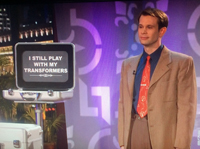


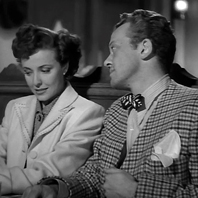
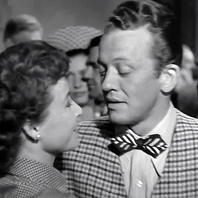
 “Clinton Stoner was a freelance men’s suit and sportswear designer whose merchant clients included Macintosh Studio Clothes and Saks Fifth Avenue. In the late 1940s, he opened his own custom sportswear shop—named “Clinton Stoner”—on the east end of the Sunset Strip. Stoner’s shop was a favorite of gangster
“Clinton Stoner was a freelance men’s suit and sportswear designer whose merchant clients included Macintosh Studio Clothes and Saks Fifth Avenue. In the late 1940s, he opened his own custom sportswear shop—named “Clinton Stoner”—on the east end of the Sunset Strip. Stoner’s shop was a favorite of gangster 